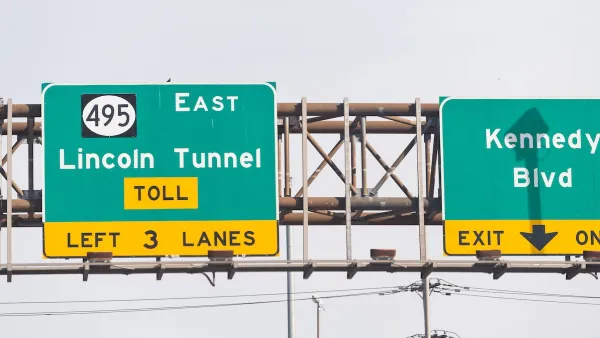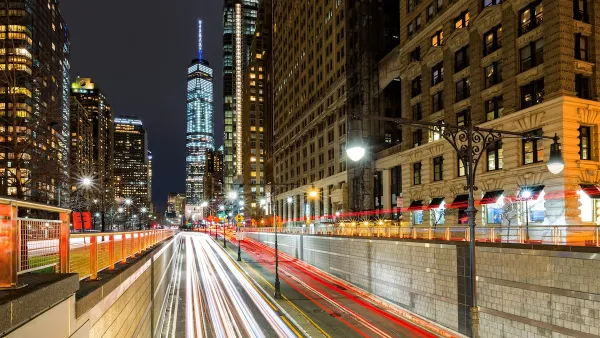Next American City reviews a new book called Traffic: Why We Drive the Way We Do (and What it Says about Us) by journalist Tom Vanderbilt, which follows in the footsteps of Freakonomics and Blink.
"Touching on neuroscience, psychology, economics and urban planning, Vanderbilt leads us through a series of case studies that gently inform us, despite what we know in our hearts, that we are not all traffic experts. He takes us to the Los Angeles traffic control center on Oscar night, uses the lines at Disneyland's Space Mountain to explain the pros and cons of congestion pricing and introduces us to a Stanford University team that has discovered how difficult it is to program a robot to drive a car.
Programming humans to drive is nearly as difficult, it turns out, as the act of driving is fraught with optical and neurological blind spots. The speed of our vehicles has outpaced the speed of evolution, such that our brains and eyes, accustomed to traveling at much slower speeds, deceive us repeatedly. One study cited by Vanderbilt found that at 30 mph drivers are presented with roughly 1,320 pieces of information a minute - and we have a distinct fondness for misinterpreting them. We have trouble gauging the speed of an oncoming car at a distance, for example, and in a phenomenon known as "inattentional blindness," we tend to overlook the objects we don't expect to see - the very objects that pose the most danger. In ways large and small, we misjudge risk."
FULL STORY: Traffic: Why We Drive the Way We Do

National Parks Layoffs Will Cause Communities to Lose Billions
Thousands of essential park workers were laid off this week, just before the busy spring break season.

Retro-silient?: America’s First “Eco-burb,” The Woodlands Turns 50
A master-planned community north of Houston offers lessons on green infrastructure and resilient design, but falls short of its founder’s lofty affordability and walkability goals.

Delivering for America Plan Will Downgrade Mail Service in at Least 49.5 Percent of Zip Codes
Republican and Democrat lawmakers criticize the plan for its disproportionate negative impact on rural communities.

Test News Post 1
This is a summary

Test News Headline 46
Test for the image on the front page.

Balancing Bombs and Butterflies: How the National Guard Protects a Rare Species
The National Guard at Fort Indiantown Gap uses GIS technology and land management strategies to balance military training with conservation efforts, ensuring the survival of the rare eastern regal fritillary butterfly.
Urban Design for Planners 1: Software Tools
This six-course series explores essential urban design concepts using open source software and equips planners with the tools they need to participate fully in the urban design process.
Planning for Universal Design
Learn the tools for implementing Universal Design in planning regulations.
EMC Planning Group, Inc.
Planetizen
Planetizen
Mpact (formerly Rail~Volution)
Great Falls Development Authority, Inc.
HUDs Office of Policy Development and Research
NYU Wagner Graduate School of Public Service





























